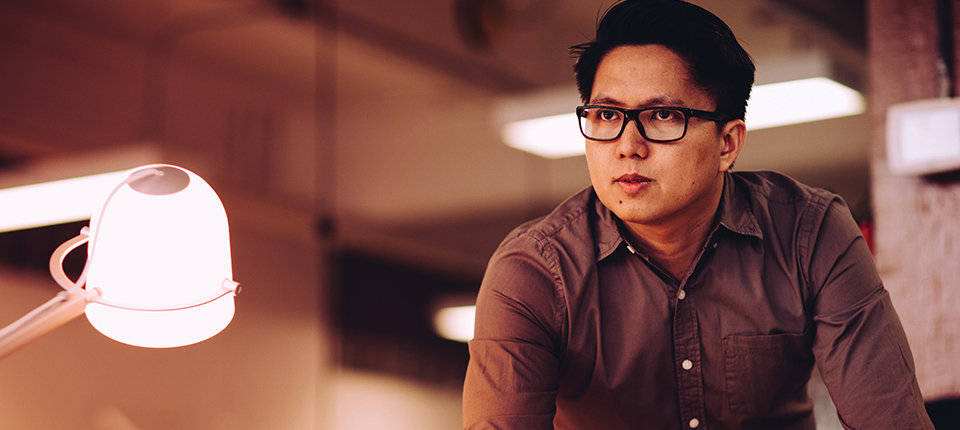
Innovations Born from the Pandemic have only just Begun
Abbott innovators share COVID learnings and their impact on the future as we enter the pandemic's 3rd year.
Mar. 18, 2022
- Copy Link
- Share on X
- Share on Facebook
- Share on Linkedin
The healthcare walls have come down. Crumbling beneath the weighty demands of the COVID-19 pandemic.
In their place, the future of healthcare is emerging and it looks more connected, digital and personal than ever before.
Abbott scientists remain on the front lines of both the pandemic and this healthcare transformation. And now they’re taking the lessons they've learned from two years of pandemic and reshaping the way they innovate.
Hear from three of these innovators in Rapid Diagnostics, Neuromodulation and Structural Heart, who talk candidly about their pandemic learnings, the resulting changes and what all of this means for future innovation.
"We're in the early innings of a ball game. The progress made in remote care in the past two years is amazing, but this is just the beginning," said Ryan Lakin, head of product development for Abbott's Neuromodulation business.
Michael Palm
Commercial Innovation Strategy Lead, Rapid Diagnostics
The pandemic changed the way I think about... rapid diagnostics and the acceleration of at-home testing. Abbott became the Number One provider of at-home testing during the pandemic, and there is now an expectation for additional at-home testing into the future. Our R&D and innovation teams are looking at how we can combine diagnostics and digital technology to make at-home testing reliable, accessible and affordable to truly make a difference in people’s health.
I've learned... that access is about more than physically having a test. It's also the ability to perform the test and have confidence. Our goal is that a person feels as confident the first time they perform a test as they do the hundredth time. This is now a big focus for us in the innovation cycle.
Two years of pandemic lessons have inspired us... to do many things, including incorporate digital capabilities into the earliest stages of test development. At the start of the pandemic, the digital components of our COVID-19 tests, like our NAVICA app, were an add-on. Now, these digital components are intrinsic to our products. We’re building the digital capabilities as we develop the tests.
Ryan Lakin
Head of Product Development, Neuromodulation
The pandemic changed the way I think about... what’s possible in medical devices. Our Neurosphere Virtual Clinic — a first-of-its-kind remote technology in the U.S. for people with chronic pain and movement disorders — came to market during the pandemic in March 2021, at least two years earlier than we ever anticipated. Why? Because we were unconstrained in how we thought about bringing a solution to market. The pandemic forced us to think about alternative pathways to get this much-needed product approved safely and quickly. And that’s what we did.
I've learned... there's real value in non-medical device solutions. We launched myPath — a digital health app enabling patients with chronic pain to get educational materials and report pain relief to their doctor before a device is permanently implanted — in January 2021, and we've had five product updates since. Compare that to a medical-device solution, which you might update once a year. Our pace of innovation is much faster with non-medical device solutions, which allows us to help more people, increase access and differentiate our competitive position.
Two years of pandemic lessons have inspired us... to look at all innovation through the lens of connected care. Now, from the earliest design stages, we’re considering how a technology would integrate into our connected care platforms. We want to make sure that nothing is left out of the ecosystem we’ve created, because it’s clear, now more than ever, that medical devices is not an isolated business. This technology needs to be connected to the rest of the world.
Santosh Prabhu
Head of Product Development, Structural Heart
The pandemic changed the way I think about... access to care. During the pandemic everything became virtual, but we still had to ensure people received the healthcare they needed, especially during medical emergencies. We had to think about things differently and that spurred a lot of innovation in technologies that allow for remote and virtual diagnosis, therapy administration and patient monitoring. Many of these technologies that were developed because of the pandemic will carry forward and become part of the new “normal” even after the pandemic ends.
I've learned… that we must innovate not only in terms of product development, but also in how we train our sales reps, therapy specialists and clinicians. Virtual, mixed and augmented reality technologies are part of our lives now. This tech plays a key role in remote proctoring and therapy administration, and our people and physicians need to be comfortable using it.
Two years of pandemic lessons have inspired us... to think, partner and work more efficiently. We’re constantly asking ourselves now how we can best work with our customers, regulators, and coworkers around the world.
Learn more about Abbott's latest innovations, including tiny tech that has a big impact and the next generation in diabetes care.
For the latest on Abbott’s life-changing technology, get updates directly in your inbox.